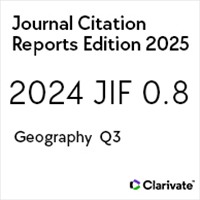El efecto sustitución y la evolución del costo de vida en la frontera de Uruguay con Brasil
The effects of substitution and the evolution of the cost of living expenses within the Uruguay-Brazil border
https://doi.org/10.21670/ref.2006.14.a02
Palabras clave:
frontera, consumo, costo, gasto, alimentosResumen
El consumidor que vive próximo a la frontera de Uruguay con Brasil tiene la posibilidad de comprar bienes en ambas márgenes de la misma. Puede sustituir compras de un país hacia el otro según la evolución relativa de los precios. De esta manera, tiene acceso a un menor costo de vida que un consumidor ubicado en el interior del país. Además, si el tipo de cambio real bilateral experimenta fluctuaciones importantes, puede sacar un provecho significativo de su localización. Este trabajo aborda el tema desde un punto de vista teórico y empírico. Por un lado, se presenta una adaptación de la teoría de los índices del costo de vida a la situación planteada. Por otro, las estimaciones realizadas muestran que la ventaja derivada de vivir en la frontera fue muy significativa en la última década.Abstract The consumers that live near the border Uruguay-Brazil have the possibility of buying goods on both sides of such border. They may replace purchases of one country to the other according to the evolution of prices. In this way, consumers have a lower cost of living compared to the consumers living in the rest of the country. Besides, if the real bilateral exchange rate undergoes important fluctuations, they may take significant advantage of their location. This paper deals with the issue from a theoretical and empirical point of view. On one hand, it presents an adaptation of the cost-of-living index theory to the situation, and on the other hand, the estimates show that the advantages of living on the border were really significant in the last decade.
Citas
Lloyd, P.J. (1975), “Substitution Effects and Biases in Nontrue Price Indices”, American Economic Review, 65(3), pp. 301-313.
Moulton, B. (1996), Bias in the Consumer Price Index: What the Evidence?, Bureau of Labor Statistics Working Paper 294.
Shapiro, M. y D. Wilcox (1997), Alternative Strategies for Aggregating Prices in the CPI, NBER Working Paper Series, 5980. DOI: https://doi.org/10.3386/w5980































